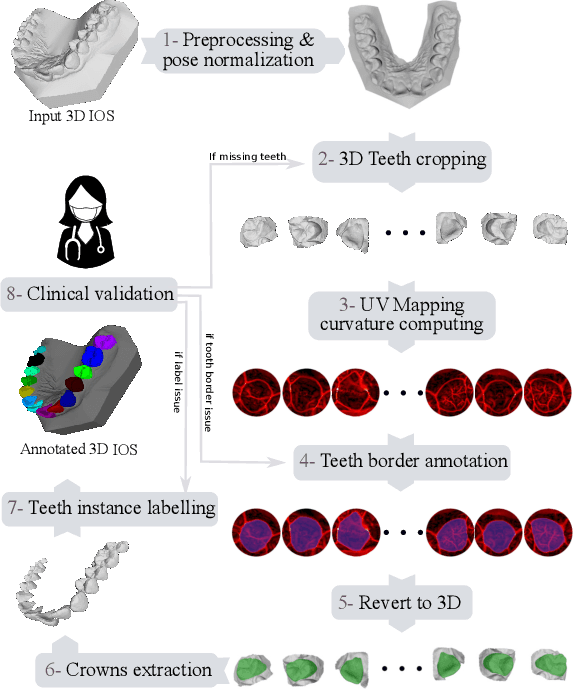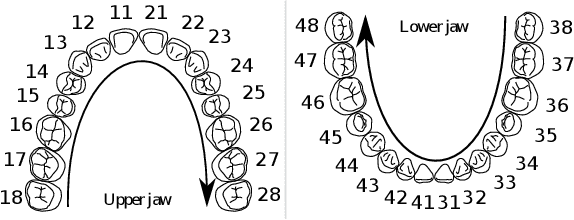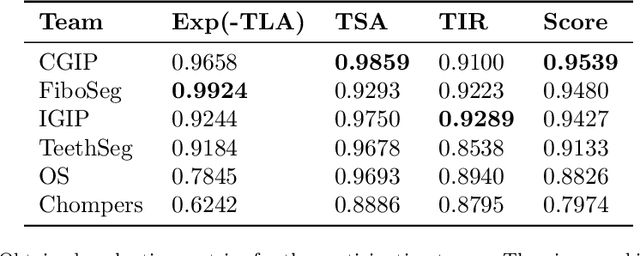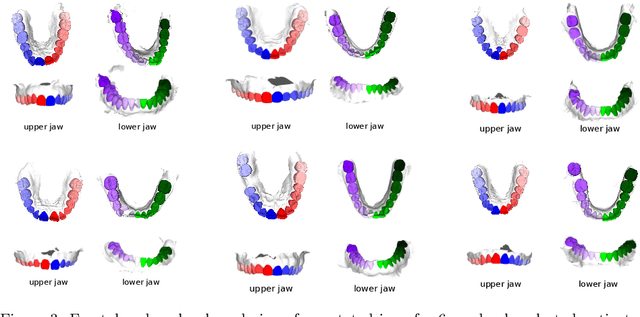Tudor Dascalu
A Sequential Framework for Detection and Classification of Abnormal Teeth in Panoramic X-rays
Sep 04, 2023Abstract:This paper describes our solution for the Dental Enumeration and Diagnosis on Panoramic X-rays Challenge at MICCAI 2023. Our approach consists of a multi-step framework tailored to the task of detecting and classifying abnormal teeth. The solution includes three sequential stages: dental instance detection, healthy instance filtering, and abnormal instance classification. In the first stage, we employed a Faster-RCNN model for detecting and identifying teeth. In subsequent stages, we designed a model that merged the encoding pathway of a pretrained U-net, optimized for dental lesion detection, with the Vgg16 architecture. The resulting model was first used for filtering out healthy teeth. Then, any identified abnormal teeth were categorized, potentially falling into one or more of the following conditions: embedded, periapical lesion, caries, deep caries. The model performing dental instance detection achieved an AP score of 0.49. The model responsible for identifying healthy teeth attained an F1 score of 0.71. Meanwhile, the model trained for multi-label dental disease classification achieved an F1 score of 0.76. The code is available at https://github.com/tudordascalu/2d-teeth-detection-challenge.
3DTeethSeg'22: 3D Teeth Scan Segmentation and Labeling Challenge
May 29, 2023



Abstract:Teeth localization, segmentation, and labeling from intra-oral 3D scans are essential tasks in modern dentistry to enhance dental diagnostics, treatment planning, and population-based studies on oral health. However, developing automated algorithms for teeth analysis presents significant challenges due to variations in dental anatomy, imaging protocols, and limited availability of publicly accessible data. To address these challenges, the 3DTeethSeg'22 challenge was organized in conjunction with the International Conference on Medical Image Computing and Computer Assisted Intervention (MICCAI) in 2022, with a call for algorithms tackling teeth localization, segmentation, and labeling from intraoral 3D scans. A dataset comprising a total of 1800 scans from 900 patients was prepared, and each tooth was individually annotated by a human-machine hybrid algorithm. A total of 6 algorithms were evaluated on this dataset. In this study, we present the evaluation results of the 3DTeethSeg'22 challenge. The 3DTeethSeg'22 challenge code can be accessed at: https://github.com/abenhamadou/3DTeethSeg22_challenge
 Add to Chrome
Add to Chrome Add to Firefox
Add to Firefox Add to Edge
Add to Edge